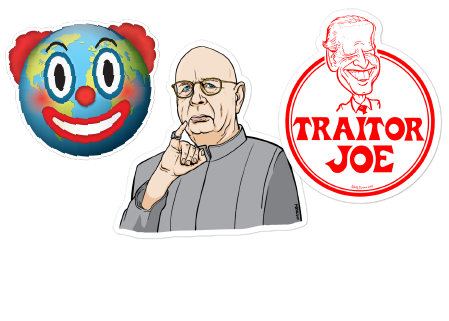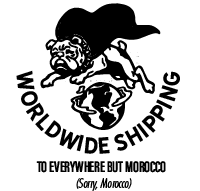





Nixon's the One 1968 Campaign 3/4 Sleeve Raglan
Coming off of the closest election in US history in 1960 and the 1962 gubernatorial loss in California, Richard Nixon stayed out of the 1964 bit for the White House. The nation grieved Kennedy's recent assassination and was likely to support LBJ anyhow. Many savvier powerbrokers in the GOP, including Nixon, figured that the chaos and division in the country and the Republican party meant it was better to essentially punt and prepare for a comeback in `68.
The eventual 1964 nominee Barry Goldwater was a good man, but he didn't unify the party that was fractured between the Eastern establishment Republicans represented by Rockefeller and Romney supporters and the Western Goldwater Republicans. So Richard Nixon played his part to support Goldwater with appearances and an endorsement, but he sensed it would be for naught in the end.
He was right. The GOP was slaughtered in the 1964 elections across the board.
By 1967 social turmoil and the mishandling of the Vietnam War were making a second full term for LBJ more and more inoperable for Democrats. Baby boomer students and hard New Left radical elements created a fissure so deep with Souther Democrats, working-class democrats, and the party establishment that it made the internecine division in the Republican party seem quaint. Violence had exploded across the nation. The anti-war protests along with New Left Marxian opportunists strategically embedded in the movement were turning off a growing number of Americans. The country seemed to be spinning out of control and the Democrat party was right at the center of the disarray.
The last straw for LBJ was the announcement that Robert Kennedy was running. Within two weeks, a politically savvy President Johnson understood the writing on the wall. After already barely beating Sen. Eugene McCarthy in the New Hampshire primaries, he famously announced he would neither seek nor accept the nomination of the party on March 31st. The field was now open. Sort of.
Sixty-six days later, Robert F. Kennedy was murdered at the Ambassador Hotel in Los Angeles immediately after celebrating his win in the California presidential primary against Vice President Hubert H. Humphrey. The Johnson Administration had thus inherited two nominations from Kennedy assassinations in 5 years' time, as Humphrey eventually became Nixon's general election opponent. But the Democrats were impossibly fractured.
By November 6th the political landscape had changed forever. Nixon's popular message of unification, law and order, and lowering the volume of national debate had won over the voting public. The fatigue of war, violence, protest, and cultural disruption made enough Americans want some semblance of normalcy to return. George Wallace's independent run had also forever broken the New Deal Democrat collation in the South. Wallace received 46 crucial electoral votes. But even if Humphrey could have obtained all of them, it still wouldn't have been enough to beat Nixon who won the White House with 301 electoral votes.
Still, more people had voted against Nixon in raw numbers. 40,804,528 Americans had voted for either Humphrey or Wallace to Nixon's 31,710,470. America's political turmoil wasn't finished.
Nixon became as embattled as LBJ in the White House almost as soon as he took office. But against an activist Democrat Congress and swarming press, it wouldn't be long before another American vacated the White House under uncommon circumstances. By the time Nixon announced the Cambodian incursion in 1970, followed by the Kent State protest shooting, Washinton politics were as adversarial as ever.
Nixon was hated by the press more than any President in modern history until Donald Trump. He had risen to popularity as a California congressman in the hot pursuit of New Deal communist Alger Hiss during the House Un-American Activities Committee (HUAC) in 1948. The press and Hollywood never forgave Nixon for his part in HUAC. But when Nixon was convinced by Henry Kissinger in 1971 to allow Attorney General John N. Mitchell to file an injunction forcing the New York Times to cease publishing articles about the Pentagon Papers exposing the Kennedy and Johnson Administrations' lies about the Vietnam War, it was an irreparable fissure.
The Nixon White House created a covert group of intelligence assets dubbed the White House Plumbers to at first discredit the leaker of the Papers, Danielle Ellsberg. Unsuccessful in that, they eventually moved on to other operations such as the Watergate Hotel break-in, which concluded in Richard Nixon's resignation from office.
A stylish spin on the classic baseball raglan. The combed cotton blend makes it super soft, comfortable, and lightweight.
• All solid colors are 100% ring-spun cotton
• Heather Grey color is 90% cotton, 10% polyester
• Heather Denim color is 50% cotton, 50% polyester
• Fabric weight: 4.5 oz/yd² (152.6 g/m²)
• Fine knit jersey
• 30 singles
• ¾ sleeves
• Contrast raglan sleeve
• Unhemmed bottom
• Reactive-dyed for longer-lasting color
• Prewashed to minimize shrinkage
• Tear away label
Size guide
| LENGTH (inches) | WIDTH (inches) | |
| S | 28 | 18 |
| M | 29 | 20 |
| L | 30 | 22 |
| XL | 31 | 24 |
| 2XL | 31 | 26 |
| LENGTH (cm) | WIDTH (cm) | |
| S | 71.1 | 45.7 |
| M | 73.7 | 50.8 |
| L | 76.2 | 55.9 |
| XL | 78.7 | 61 |
| 2XL | 78.7 | 66 |
Collections: Conservatives Corner, Ladies Long Sleeve, Men's Apparel and Accessories, Men's Tops | Graphic Tees for Rebels & Liberty Lovers, New Arrivals, Raglans, Republicans, Retro Campaign Shirts | The Political History Gift Shop, Retro Republican
Type: Mens Top
Category: 1968, 3/4 sleeve, 60s, Agnew, campaign, election, GOP, history, Humphrey, liberty maniacs, politics, raglan, republican, retro, retro republican, Richard Nixon, shirt













